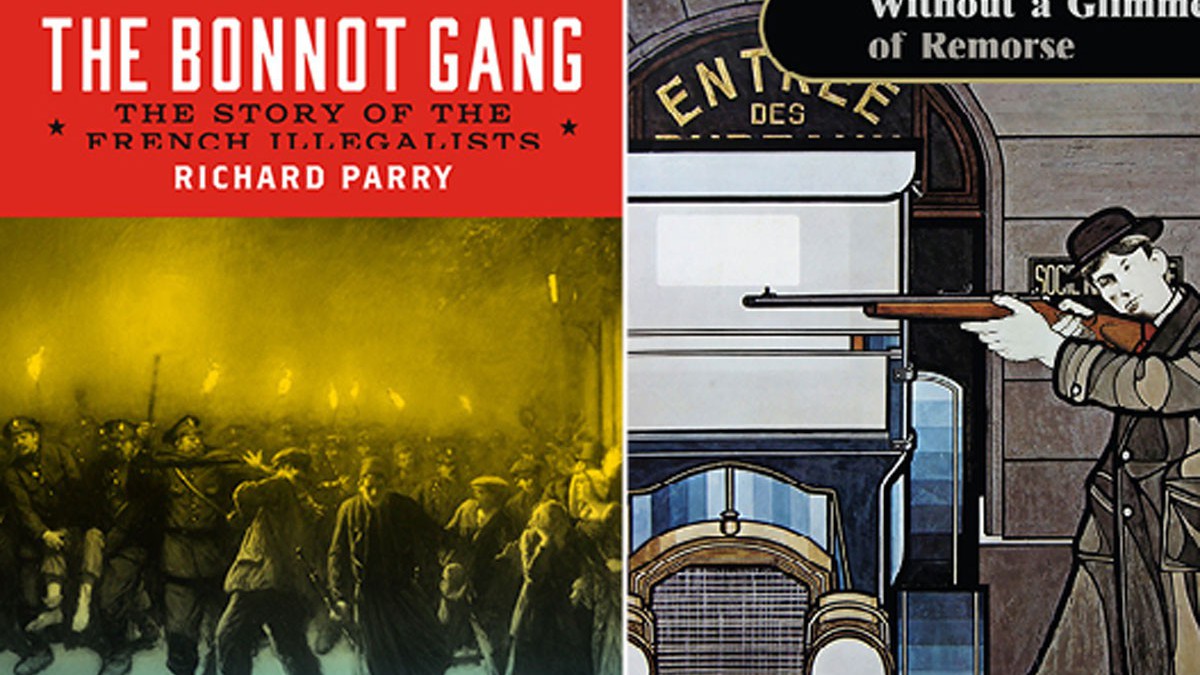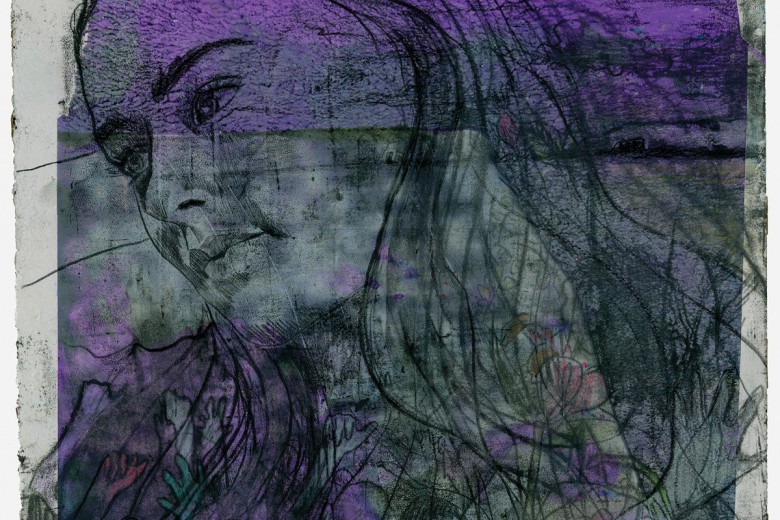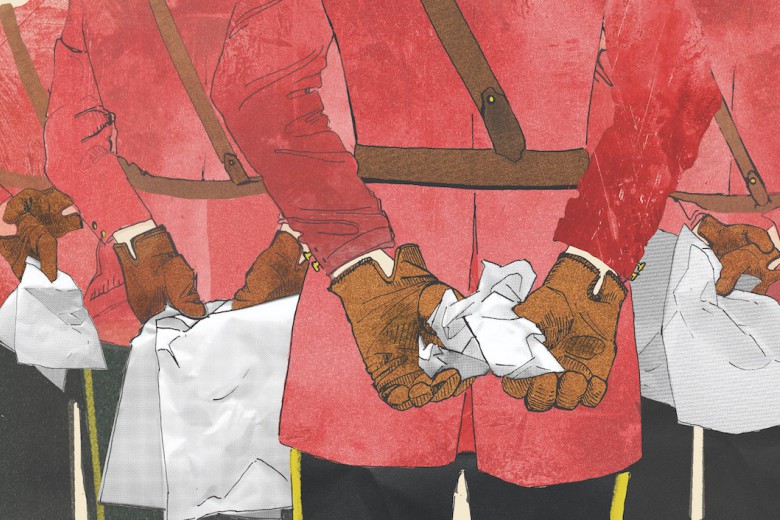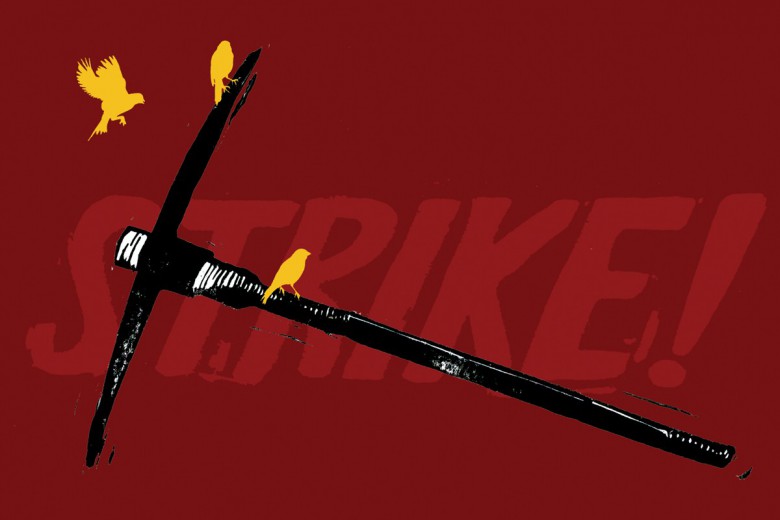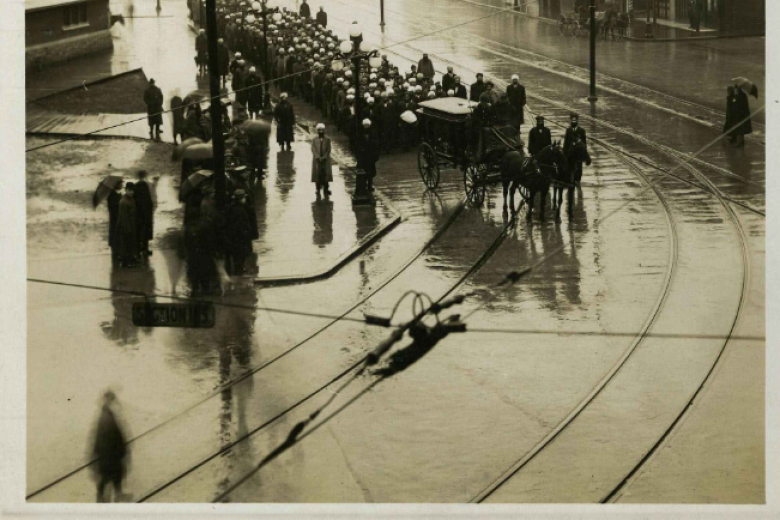The Bonnot Gang: The Story of the French Illegalists
By Richard Parry
PM Press, 2016
Without a Glimmer of Remorse
By Pino Cacucci. Illustrated by Flavio Costantini
Black Powder Press, 2016
Class war is usually envisioned as a mass movement, often under the umbrella of formal organizations like revolutionary parties or syndicalist federations. But is that the only articulation of class war? In 2016, two books came out looking at other forms of expropriation. Both books are reprints of classic texts exploring the French illegalists known as the Bonnot Gang, a group of individualist anarchists involved in forgery, counterfeiting, and, most notoriously, bank robberies and burglaries to support their insurrectionary politics.
The first book is The Bonnot Gang: The Story of the French Illegalists by Richard Parry. The second is the novel Without a Glimmer of Remorse written by Pino Cacucci and illustrated by Flavio Costantini. Each of these texts, in different ways – one historical, the other fictive – presents informative, engrossing, and exciting narratives exploring political and personal revolt against society. The texts make you wonder: what if folk heroes like Jesse James, Bonnie and Clyde, or John Dillinger actually had politics behind their actions?
Parry contrasts the Bonnot Gang with “American antiheros” and argues: “[T]he illegalists were consciously political, both on a personal level and in their view of the structure of the state and society. They are far more fascinating as individuals with their vegetarianism, teetotalism and belief in anarchy and free love as well as for their daring exploits.” Their “daring exploits” included the expropriation of wealth from capitalists and other members of the bourgeoisie as a means of personal survival while funding anarchist projects. They also carried out acts of revenge against those responsible for poverty, exploitation, and violence.
Cacucci, meanwhile, explores the ideas of rebellion and action through a fictional monologue by Jules Bonnot: “Hitting the exploiters with their fondness for the guillotine and for champagne in precisely what they cherished most, their purse. Not for the sake of lining one’s pockets, but so as to repay them in kind for a little of the terror they spread, so cocksure that they were unreachable. And not with bombs, but at gunpoint, wresting back a fraction of everything that they were hiding from the millions in despair.” While this passage appears as a fictional representation of Jules’ perspective, it is also a vantage point through which to consider the perspective of many anarchists at the time. Specifically, many European individualist anarchists believed the act of expropriation was a legitimate form of revolt against the social order (capitalists, politicians, and the church). Expropriative anarchism, or “expropriations on the bourgeoisie,” has been a practice of anarchist affinity groups – most famously in Argentina and Spain by Buenaventura Durruti, Severino Di Giovanni, Miguel Arcángel Roscigna, and Lucio Urtubia – that has involved theft, robbery, scams, and counterfeiting currency. The French illegalists expropriated not only to finance anarchist activities; for them, it became a way to live.
Parry situates the Bonnot Gang’s philosophies within a larger individualist anarchist milieu that was thriving in France in the interwar period. Founded by Octave Garnier, Raymond la Science (Raymond Callemin), and René Valet, the cornerstone of the Bonnot Gang’s philosophy was the liberation of an individual’s desires (that is, following one’s desires rather than being crushed by the laws and morality of the church, state, family, and so on) and the drive to live a free life outside of or in contrast to the forced labour of the masses. Members of the Bonnot Gang were influenced by earlier anarchists: La Science was inspired by Mikhail Bakunin and Pierre-Joseph Proudhon, and others were also influenced by Max Stirner’s egoism. Cacucci explores these ideas through Jules Bonnot’s meditations on Stirner: “Revolution has its sights set on a new organization; rebellion on the other hand prompts us to reject being organized any longer, but rather to look to self-organization and places no great hopes in institutions.”
When the gang started out, the press referred to them as the “Auto Bandits” because they were the first gang to utilize an automobile for their getaways. Because of this, the gang had an edge over the French police, who didn’t have access to the repeating rifles and automobiles used by the gang. The gang was later referred to as the Bonnot Gang after Bonnot – worker, soldier, chauffeur to Sir Arthur Conan Doyle, and primary character in Cacucci’s novel – walked into the offices of the popular daily newspaper Le Petit Parisien and, in an act of bravado, set his semi-automatic gun on a desk and complained to the journalists about stories they had been running about the gang.
It was also around that time that Garnier published a letter in Le Matin mocking the police, challenging their “intelligence,” and taunting them for their inability “to pick up my trail again.” In the letter, he wrote, “Don’t think I’m going to run away from your police; on my word, I believe they’re the ones who are afraid.” Addressing the police, he closed the letter: “Awaiting the pleasure of meeting you.” These acts of defiance led to an increase in police funding of 800,000 francs; a bounty of 100,000 francs was charged as a reward for the gang’s capture.
Eventually the police rounded up the gang’s supporters and other anarchists, and the Bonnot Gang’s spree of bank robberies, burglaries, and shootouts with police came to an end. André Soudy was arrested on March 30, 1912. According to Parry, “On his person they found the, now standard, loaded Browning, six bullets, a thousand francs in cash and a phial of potassium cyanide.” Shortly after, in early April, Édouard Carouy and la Science were arrested. Cacucci describes the arrest: “Raymond was unable to draw any of the three pistols he had in his pocket because Sevestre brought the butt of his own pistol down on his head. At the Sûreté, Raymond retreated into absolute silence. Screams, threats and kicks proved useless. There was no way that he was about to talk.” As April closed, the police had arrested or detained 28 gang members and supporters, but Bonnot, Garnier, and Valet remained at large.
“The walls of the old house bore the scars of gunfire and there wasn’t a single pane of glass left intact in the window-frames,” writes Cacucci, illustrating the famous shootout between police and Jules Bonnot on April 28, 1912. The police had tracked Bonnot to Choisy-le-Roi, a suburb of Paris. For some time, he kept the 500 armed police officers and soldiers at bay despite the Hotchkiss machine gun in their possession. Finally, the police chief sent three officers to place dynamite charges under the house, blowing up the entire front portion of the residence. Bonnot took cover in a rolled-up mattress and continued to shoot back at the police. Ultimately, he was shot in the head. Roughly two weeks later, 300 police and 800 soldiers surrounded Garnier and Valet in an eastern suburb of Paris, Nogent-sur-Marne; the skirmish resulted in another dynamite explosion that killed Garnier and wounded Valet.
When the gang’s survivors were put on trial, Victor Serge was sentenced to five years for robbery, and Eugène Dieudonné to life imprisonment. Carouy and Marius Metge also got life in prison, with hard labour. Metge was sent to a penal colony, while la Science, Étienne Monier and Soudy were executed by guillotine because they refused to plead for clemency. Like many classic anti-hero tales, these ones end with shootouts and guillotines … but these rebels had an articulate anarchist politics of defiance as they looked into their executioner’s eyes.
Both books are great individually, but when read together, they fill gaps created by the other’s genre. Where Parry gives a detailed and documented history, Cacucci articulates emotion and subjectivity through his narrative. The only thing I found wanting in the texts was their treatment of the women involved as background subjects. These women were writers, journal co-editors, and active proponents of free love. They were also, importantly, involved in clandestine activities, and these two books would be richer if they engaged with the strong history of individualist-anarchist women. That said, both authors have a deep understanding of and sympathy for the philosophies and desires of the individuals involved in the Bonnot Gang, bringing out powerful accounts of this too-often ignored group in anarchist history.


